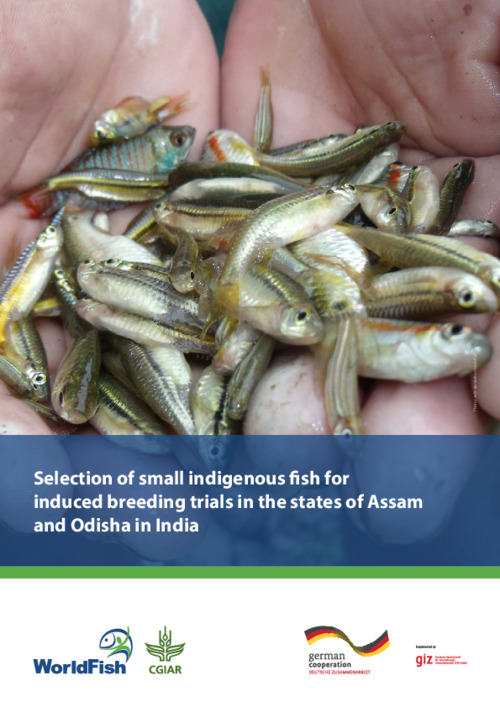Selection of small indigenous fish for breeding trials in the states of Assam and Odisha in India

Farming SIS has great potential to increase their availability in the market and make them more accessible
to consumers but scaling up production of cultured SIS will require the development of new captive
breeding techniques. The following criteria were applied to select candidate species of SIS for initial artificial reproduction trials: a. The micronutrient profile of the fish, with preference given to those with high levels of important vitamins and minerals. b. Trophic level, with species with at lower trophic levels (i.e., lower in the food web), preferred over higher trophic level species. c. Suitability for culture. d. Market demand and consumer preferences. Six species were selected for induced breeding trials, as listed below.
Mola carplet (Amblypharyngodon mola) is predominantly a phytoplankton feeder, and has high Vitamin
A and B 12, Iron and Calcium content. Pool barb (Puntius sophore) is mainly herbivorous. Its polyunsaturated fatty acid (PUFA) content is almost
three times higher than that of mola, and it also contains high levels of Calcium. Flying barb (Esomus danrica) has a high Iron, Iodine, Selenium and Vitamin B12 content. Dhela (Rohtee cotio) is dominantly phytoplankton feeder, with high levels of Calcium, Selenium, and
Vitamin A. Banded gourami (Cholisa fasciata) is an omnivore that can survive in hypoxic water where most fish cannot and is thus very effective for eliminating mosquito larvae. It contains high levels of Iron, Calcium,
Zinc and Vitamin B12. Koi (Anabas testudineus) is an omnivore, with high levels of PUFA, and a moderate selenium and high vitamin A content.
Permalink
Date Available
Type
Publisher
Countries
Copyright
CC-BY-NC-4.0
Research Themes
Language